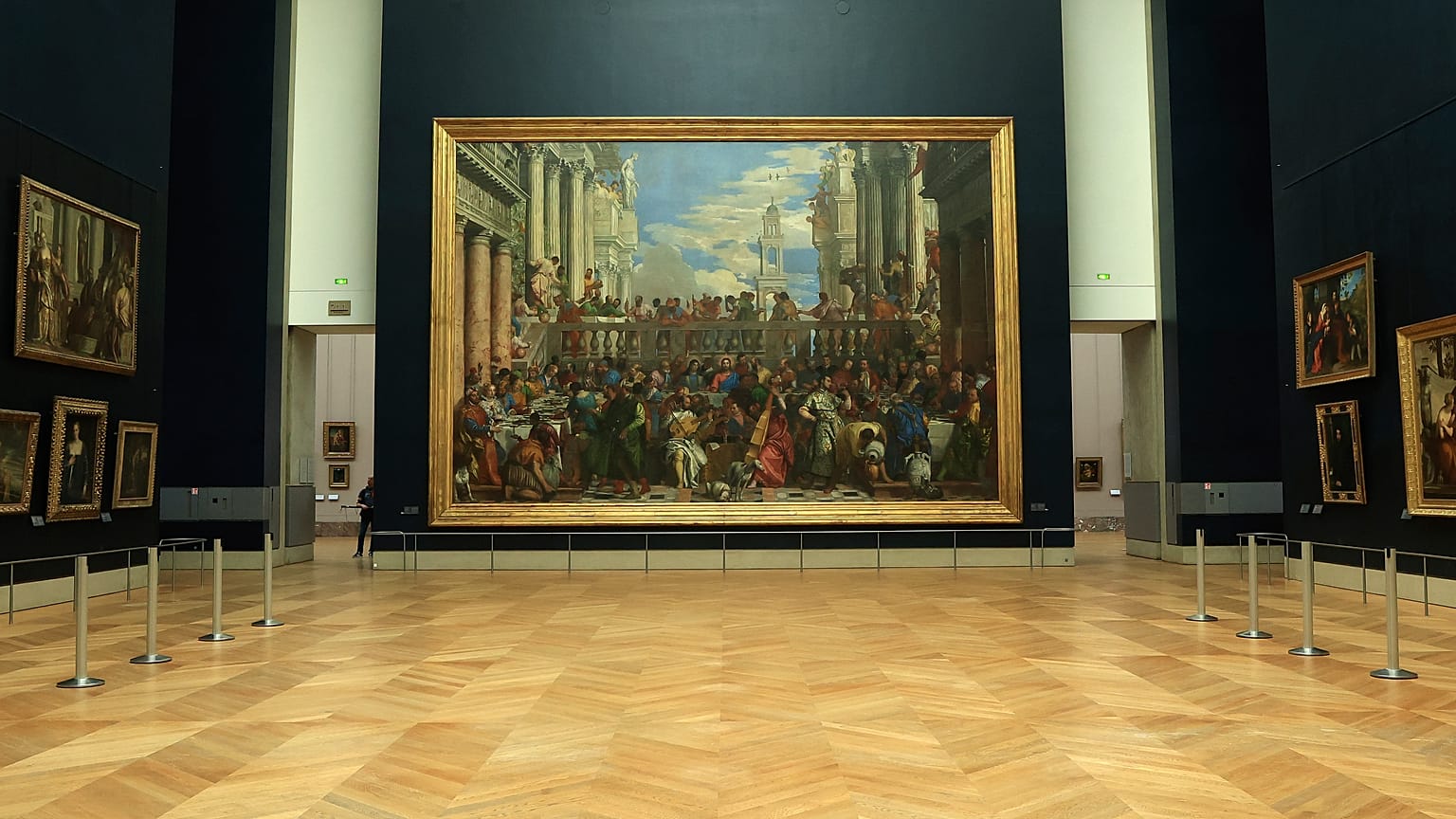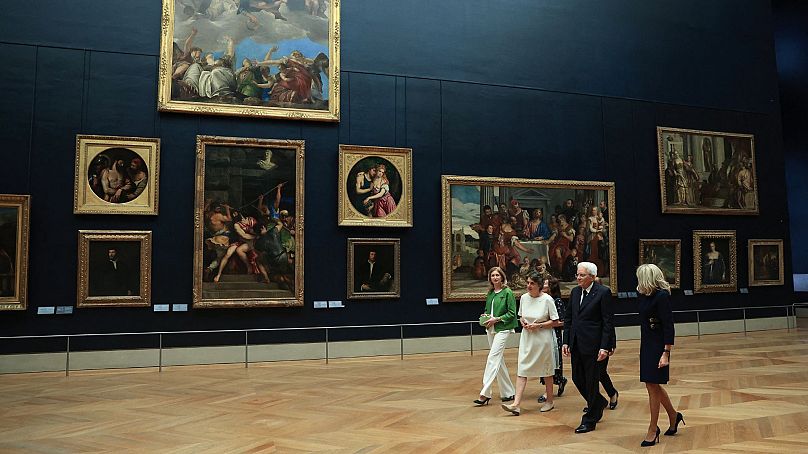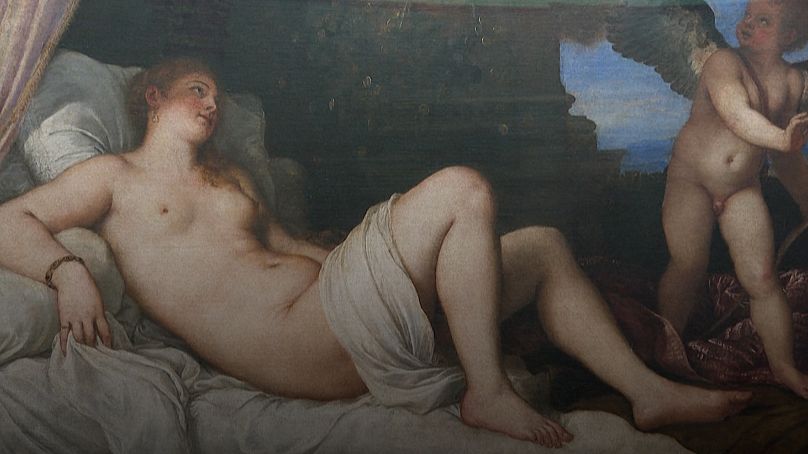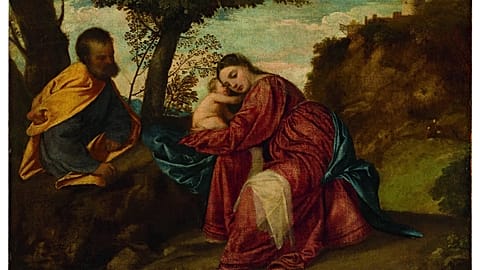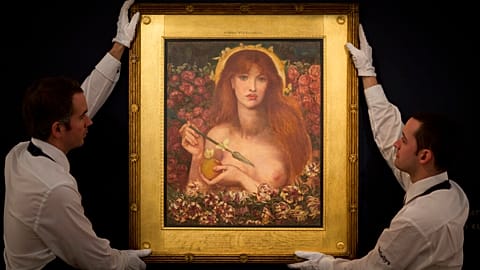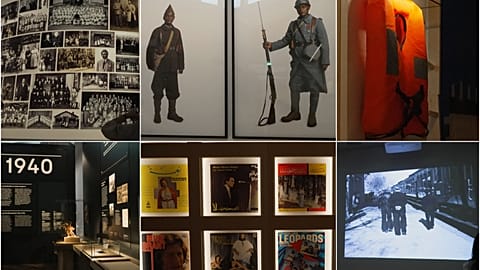From Naples to Paris: The prestigious Louvre museum is presenting an epic six month-long exhibition of Italian Renaissance art.
Starting from today (7 June), the Louvre Museum will host a six-month exhibition of masterpieces from the Capodimonte Museum in Naples, making it the largest exhibition in the world dedicated to the Italian Renaissance.
Spread across three locations - the grand gallery, the chapel room, and the clock room - the exhibition titled "Naples in Paris" features nearly 70 artworks from the Italian museum, which will undergo renovations starting in 2024.
Combined with the hundreds of artworks already present in the Louvre's collections, it offers visitors a concentrated display of the best of Italian painting from the 15th to the 17th century.
For the opening of the exhibition, French President Emmanuel Macron welcomed his Italian counterpart Sergio Mattarella to the Louvre Museum.
What's on display?
The exhibition showcases the most exquisite portraits produced between Venice, Rome, and Florence from 1515 to 1535, alongside remarkable nudes and spectacular masterpieces by Caravaggio, Masaccio, Bellini, Ribera, and Parmigianino, also known as Mazzola.
It also includes works by Titian, Carracci, and Reni.
Visitors will journey from the grand Italian Mannerism with its shades of green and red to the chiaroscuro and subversive realism of Caravaggio, as well as the paroxysmal violence of Neapolitan Baroque, exemplified by Artemisia Gentileschi's "Judith Beheading Holofernes."
In recent years, Gentileschi, a female painter, has received renewed recognition from certain museums, art historians, and the media.
According to the curators, Sébastien Allard, Director of the Department of Paintings at the Louvre Museum, and Sylvain Bellenger, General Director of the Capodimonte Museum, this dialogue also sheds a new light on the collections of both museums and their history.
Bellenger highlights the balance and grace of the Italian Baroque at the Louvre, which has been a focus since the time of Mazarin and Louis XIV, particularly emphasizing the Roman and Bolognese schools. In contrast, he emphasizes the dramatic and spectacular nature of the Neapolitan Baroque.
While the Louvre is "very rich in Venetian paintings of the 16th century, such as Titian and Veronese, it has fewer works by Tintoretto and Bellini."
However, the Capodimonte Museum brings "one of the most beautiful paintings: 'The Transfiguration,'" according to Allard.
A section in the chapel room provides information about the history of the Capodimonte Museum's collection, which was assembled on a hill overlooking Naples by the Farnese, Bourbon, and Bonaparte-Murat families before the unification of Italy.
The final room offers several exceptional "sketches" (charcoal and chalk preparatory drawings) by Raphael and Michelangelo.
"Naples in Paris" opened on 7 June and runs until 8 January 2024.
Check out the video above for a look inside this stunning exhibition.















